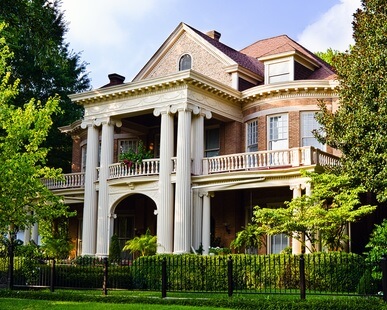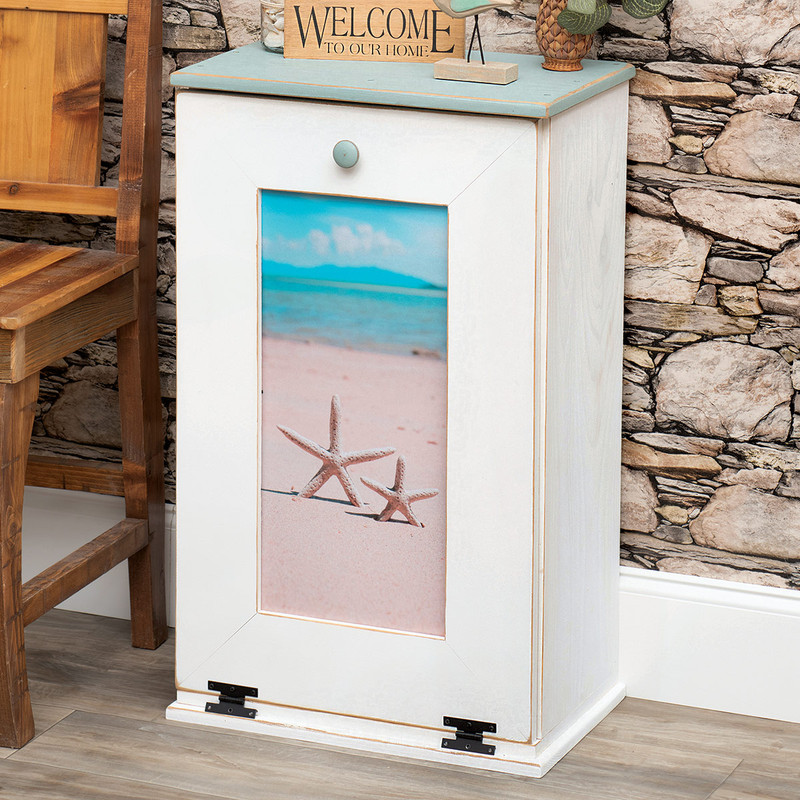Architectural Styles of the Carolinas
May 1st 2019
 The rich architectural legacy of the Carolinas extends back to Colonial days. Back then, the style of choice for builders was Georgian, culling its name from the King Georges that ruled Great Britain from 1714 until 1830. A Georgian building began life as a simple rectangular box and everything that followed hewed strictly to rules of symmetry and proportion known as the "Golden Ratio."
The rich architectural legacy of the Carolinas extends back to Colonial days. Back then, the style of choice for builders was Georgian, culling its name from the King Georges that ruled Great Britain from 1714 until 1830. A Georgian building began life as a simple rectangular box and everything that followed hewed strictly to rules of symmetry and proportion known as the "Golden Ratio."
Georgian design reached its pinnacle in North Carolina with the construction of the Governors Palace in New Bern in 1770. Writing in North Carolina Architecture, Catherine Bishir anointed the sprawling brick residence of Royal Governor William Tryon "a monument of opulence and elegance extraordinary in the American colonies." Abandoned after those colonies won their independence, the palace was reconstructed in the 1950s.
The Rise of Greek Revival
As the Georgian style—and its lighter, more decorative cousin, the Federal style—faded from favor in the 1820s, Americans began experimenting with the classical designs of the Greeks, with whom the ideologies of the liberty-loving Founding Fathers aligned. One of the earliest champions of the Greek Revival style was Robert Mills, considered to be the first native-born American to be trained as an architect. The Charleston native worked on the White House with his mentor, James Hoban, and famously designed the Washington Monument.
Mills' work can still be seen throughout the Carolinas. The Fireproof Building on Meeting Street in downtown Charleston, boasting a simple Greek Doric facade with minimal ornamentation, dates to 1827 and is considered the oldest building of fireproof construction in the United States. In Columbia, Wade Hampton, descendant of one of South Carolina's leading families, commissioned a magnificent mansion on Blanding Street from Mills in 1818. Although an imposing house museum today, only a portion of Mills' original vision is evident after the gardens - known throughout the state - and outbuildings were razed.
The Robert Mills House across the street is a National Historic Landmark but neither Mills nor anyone else ever occupied the classically-inspired residence. Patron Ainsley Hall died during construction and his wife sold the property to the Presbyterian Theological Seminary. One of Mills' most graceful Doric designs resides Upcountry in Winnsboro where he designed the Fairfield County Court House in 1822; the flying stairways are a 20th-century addition.
The Greek Revival style leaked into North Carolina, as well. After the original state house in Raleigh was damaged by fire in 1831, the General Assembly hired New York architect Ithiel Towne to design around a new government home on Union Square. With its central domed rotunda, the Capitol stands today as one America's finest classically rendered civic buildings.
Greek Revival buildings sprouted on the streets of affluent seaports like Wilmington, Georgetown and Beaufort. The grand columns of the temple-like structures would come to epitomize the grand plantation homes of the Carolinas. Since scholars believed that the Greeks had painted their temples while in a quest for purity, the Greek Revival homeowners followed suit.
The Charleston Single House
Carolina homebuilders were not merely marching to stylistic trends that percolated elsewhere on American streets. The Charleston single house was an adaptation of architectural styles that came to be emulated in other urban centers of high style. The earliest single houses appeared in the late 18th century and re-oriented buildings 90 degrees to conform to the city's long, narrow lots. The front door would be situated on the long side of the house, off of the street.
The first Charleston single houses from the Georgian and Federal eras did not sport the dramatic two- and three-story piazzas that define the gracious Carolina contribution to architecture today. Those came along with the Greek Revival designers. Today, the Charleston single house is in full glory in the Battery below Broad Street.
The Greek Revival era marked the apex of architectural affluence in the Carolinas. Like much of the South, the Civil War and its aftermath caused Carolina builders to resort to simpler designs in the Victorian age. Many of the structures erected in that time were scantily attired Italianate commercial buildings that form the core of many Carolina downtowns today.
Rare exceptions include the French Gothic Opera House in Newberry, South Carolina that became known as "the entertainment center of the Midlands." A swath of Victorian houses from the last decades of the 1800s can also be seen in Charlotte's Fourth Ward where Queen Annes and Romanesque Revival residences were not bulldozed but rescued and restored in the 1970s.
Splendor in the Mountains
Carolinians also sat out much of the Gilded Age of the 1890s and its home-building excesses. That did not hold for outsiders though. After a trip to Western North Carolina in 1888 George William Vanderbilt, grandson of Commodore Cornelius Vanderbilt—who was the richest man ever to die in America when he passed in 1877—decided to return and build a country home. He began buying land outside of Asheville and did not stop until he had 125,000 acres.
Vanderbilt hired Richard Morris Hunt, the first American to be admitted to the …cole des Beaux-Arts in Paris—the finest school of architecture in the world—to design a French Renaissance chateau. When the 250-room Biltmore was completed in 1895 it was (and remains) the largest privately-owned home in the United States. Vanderbilt's only child, Cornelia Stuyvesant Vanderbilt, opened Biltmore House to the public in 1930 and it is one of America's most-visited houses.
Other captains of industry, notably Edwin Grove, migrated to Asheville as well and brought high-priced architectural talent with them. The colorful buildings they constructed in the 1920s and 1930s were at the forefront of the Art Deco movement and today the mountain town displays one of the finest collection of Deco masterworks in the country. The upshot is that from Colonial-era souvenirs on the seacoast to 20th-century treasures in the mountains, the Carolinas spread out a rich tapestry before the architectural explorer.

















